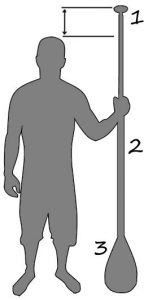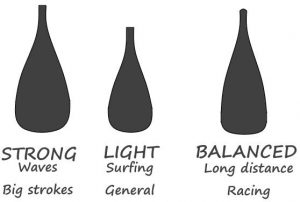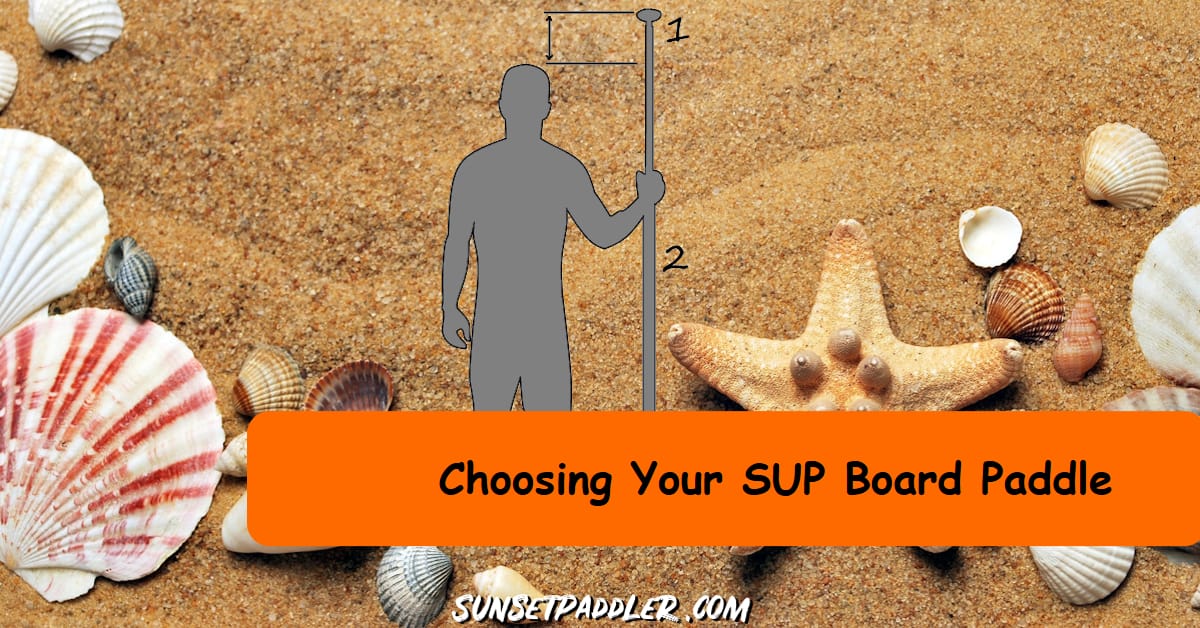Standup paddling (a.k.a stand up paddleboarding or SUP) is quite a popular recreational watersport by now. It is said to have originated from surfing in Hawaii.
However, compared to surfing, stand up paddling, as the name implies, is a little different. Instead of laying down on the board not seeing when the next good wave comes, now one could stand on the board, spot the wave, and get to it quicker using not one’s hands, but a paddle. Though, bare in mind that SUP is not limited to surfing only, it’s a rather verstile field of a watersport (link opens in a new tab).
The Importance Of A SUP Paddle
You may have the best board on the market, but chances are you won’t get too far without a proper SUP paddle. Having a good quality paddle that works well with your paddling style and body will make your paddling experience more wholesome and fun. The “best” paddle does not mean that you should buy yourself the most expensive paddle that’s available on the market. No, obviously not. The best paddles are those that are light weight and which you can use throughout the day with ease, the one you feel is right for you.
Let’s talk a little more in detail about how you should go about choosing the right SUP paddle, its features and usage. There are quite a few factors that you need to consider before you can get yourself a good SUP paddle.
Length Of The Paddle

The length of the paddle is important for maintaining your form and efficiency while riding. Oversized or even undersized paddles can cause great discomfort while riding. So, it is mandatory to get the right sized paddle that suit you well.
In order to select the most suitable paddle, follow these simple guidelines:
- Keep the paddle vertically up in a way that the tear drop blade touches the ground.
- Raise an arm above your head and figure out where the paddle lies.
- If your paddle is of proper size, the handle will rest at the bend of your wrist.
- If ordering it online, make sure to choose a handle 8-12 inches longer than your height.
The paddles can either be adjustable or non-adjustable (fixed). The adjustable length paddle can be used by people shorter or taller than you, such as one’s familiy members or friends wanting to try out the sport too, but it’s also more verstile. A fixed paddle is better suited for somebody who’s more experienced in the field or simply for somebody who knows what they want from stand up paddling more specifically (racing, touring, river riding, etc).
A SUP Paddle consists of a (1) handle, (2) shaft and (3) blade.
Materials Used
The materials used define the weight and structure of the paddles. The flexibility of the paddle is important to prevent you from undergoing any sort of imbalance. People generally prefer light weight paddles. These paddles are more expensive though!
The most common materials for SUP paddles are:
- Plastic – plastic paddles are durable and affordable. Plastic is used in entry level paddles and are almost always paired up with a shaft made up of aluminum to support your ride.
- Aluminum – aluminium paddles are an upgrade from plastic. Still affordable, the trade off is that it feels heavier in comparison and might not float on the water were it to fall in. Anyhow, these are used to make shafts which, when paired with the plastic blades, become the best choice for beginners.
- Fiberglass – This is the most common material used for the shaft and blades of a paddle. The light weight, stiffness and affordability make it popular among SUPers. The stiffness ensures effective transfer of power in every stroke. These paddles are cheaper than carbon fibers’, although more expensive when compared with the plastic and aluminum ones.
- Carbon fiber – It has stiffness more than that of the fiber glass. It is the lightest and most expensive out of all the above mentioned materials. It is basically meant for people who are frequent users and paddle for longer distances.
Blade Size
Blades are the parts that are dipped into the water. The shape of the blade and its size determine the way it flows with the water. Blade selection will be based upon the way you paddle and also depend upon your size. It varies from person to person.
- Larger blades – These blades can move a lot of water in a single stroke. You can hence take powerful strokes and increase your speed tremendously to make your experience more fun. Generally speaking, bigger paddlers should be able to manage a bigger blade.
- Smaller blades – These blades, although move less water in a single stroke, are easier to pull when compared to a larger paddle blade. These blades are recommended for long-distance racers, river riders, or what have you, and for people traveling longer distances in general as it takes less effort to paddle when compared to bigger blade. A smaller blade goes easier on your joints and can even be helpful if you have a mild injury or muscle and joint pain.

General rule of thumb: if you’re strong for your size, you may benefit from a larger blade. Conversely, if you’re weak for your size, you may get more enjoyment out of a smaller blade. However, you can’t go too wrong with something inbetween.
Blade Shape
It is also a very important aspect that you need to cover and consider while buying your SUP paddle. There are two paddle blade shapes:
- Tear drop shaped – this kind of blade shaves a very large surface area at the bottom. This feature makes it pull a lot of water in every stroke. Hence, these blades are used for powerful strokes by people who enjoy powerful strokes and slower cadence.
- Rectangular shaped – this on the other hand provide less surface area and is narrow at the bottom. Such a blade provides gentle strokes that are easier to pull off compared to the tear drop one.
or
- dihedral
- flat
Blade Offset
Another thing to consider is the offset of the blade. An offset allows the blade to remain vertical through a larger portion of the stroke. Such a blade provides much more power and will help keep you and your board paddling in a straight line. Usually a 10 degree blade to shaft offset is the most verstile, higher degree is for racing and smaller degree for surfing or whitewater river riding, etc.

But you may be wondering, why an offset to begin with? Well, for one, it doesn’t just dive in the water, the feedback from the paddle helps you in many ways. And also: which way should I use it exactly?

Taking It All In – How To Choose A SUP Paddle
Whichever paddle you choose for your SUP board, make sure that it is bought keeping in mind all of the above factors. This is really important as each person, be it a beginner or a professional, each and every person has their own set of requirements. The paddle need not be too expensive or of a very good quality, but it should certainly suffice your needs. You should feel comfortable when using it. The SUP paddles and boards should give you an experience that is memorable. You must be enjoying every second of yours in water. That is exactly why you want to get yourself a suitable paddle.

